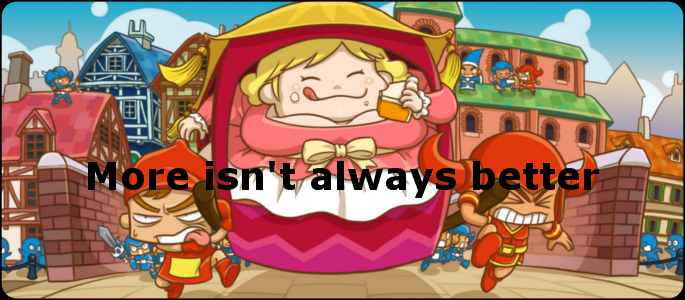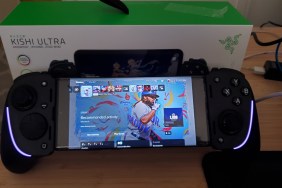All the big E3 press conferences are now over and, besides a few big announcements, the show was pretty dull. But there is one thing in particular that Microsoft, Nintendo and Sony really want you to care about, and that’s your second screen. Here’s why you shouldn’t.
The main way they want you to use the second screen is in your hand/lap simultaneously while you play a game. Nintendo wants you to look at their giant controllers screen, touch a few things and then look back up at the TV, Microsoft wants you to constantly look at your tablet in the middle of a ferocious Halo 4 gunfight to find out some ‘fun’ stats or see another camera angle, and Sony wants you to look at a Harry Potter book, and then at your TV, where you’ll have to try to read it upside down. This leads to what I like to call the Old Spice Effect – look at your TV, now back at the second screen, now back to the TV, now back to second screen, now back to the TV… sadly, you’re now dead, but if you stopped looking at a stupid second screen you’d still be alive.
If information like maps, radar or stats can’t be fitted onto your main TV, they shouldn’t be there. It’s a gimmick at best, and a hassle that requires you to constantly focus on screens that are different lengths away. And yeah, I know that some of you are probably thinking “Oh Sebastian, you’re just saying that because you’re a gamer, developers know way more and will be able to unlock the true potential of the second screen”. Fair enough fictional questioner, let’s take a look at what’s in store for Rayman Legends:
It’s the same game, same screen as on TV… so basically you won’t be using your TV and have to play the game on a small screen. You might as well wait until it’s out on the iPad – Ubisoft said they’ll be porting Wii U games over – for a tenth of the price. And then there’s the one’s that do use the controller a bit better – ZombiU lets you use it as a zombie scanner, Batman: Arkham City as an X-ray scanner and LEGO City: Undercover as a… uh, X-ray scanner again. Innovation at its finest.
Despite having been announced a year ago, Nintendo has yet to prove any true worth for the pricey second screen. Even on their own games, actors seem unsure whether to look at the TV or the remote:
Microsoft has a similar issue with Xbox Smart Glass – you only have two eyes, and can only focus on one screen at a time. And, what’s worse is that, as the screen isn’t built into the controller, you’ll have to keep your tablet/phone loosely in your lap or duck-taped to your TV. You’ll be holding your game pad, so the last thing you want to do is take your hand away to lift up an iPad.
With Wonderbook, Sony has a different, but equally troublesome problem. See, they want you to think looking at the second screen – a book – is like this:
But, just like they legally had to mention at the end, it’s not. Everything happens on your TV, so if you look at your book, all you’re seeing is a book, and if you look at your TV, all you’re seeing is a television show of a magic book. At no point do you get a magic book. You get this:
The idea of augmented books is also not original, with publishers like Disney finding great success on the iPad and other tablets with interactive children’s books – and these are one screened devices, where you look at the ‘book’ and the interactive stuff at the same time.
Luckily, there is another way Nintendo and Sony plan to make use of a second screen – playing on your Wii U gamepad away from the TV or remote playing your PS3 on your Vita, with you focusing on one screen only. The only problem is, being able to play on your Wii U while your TV is off, but within range of the Wii U console, is a feature that, while useful, isn’t important enough to make the controller such an integral part of the console (especially in a world of iPads, 3DS’ and Vitas). On Sony’s side, remote play for Vita is a great idea, but one that they clearly don’t seem to care about.
What are your thoughts on all the second screens? Share your thoughts in the comments below.








